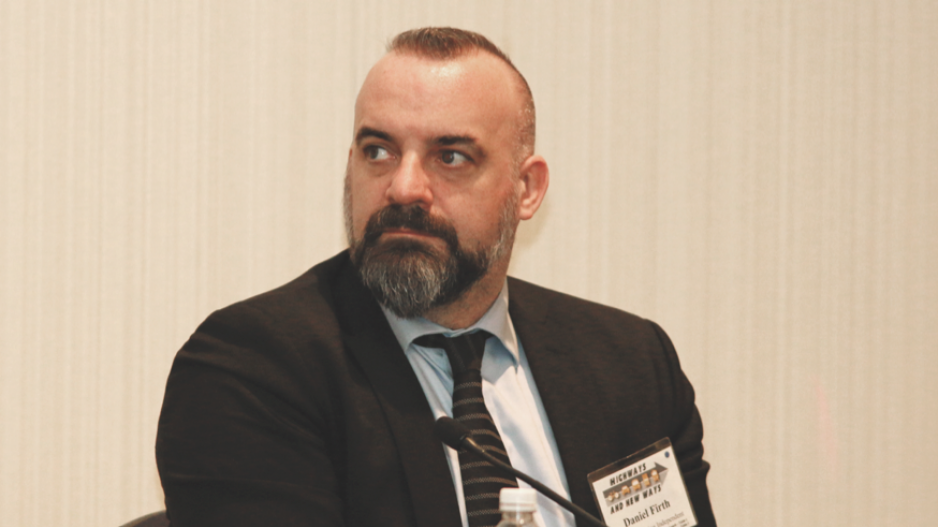Metro Vancouverites are already making their voices heard about the idea of mobility pricing in the region – they don’t like it.
Speaking January 30 at the Association of Consulting Engineering Companies British Columbia (ACEC-BC) annual conference, Daniel Firth, executive director of the Mobility Pricing Independent Commission, acknowledged Lower Mainlanders think mobility pricing is simply a fancy term for a “commuter tax.”
“We had heard that and it has come out in a number of newspaper commentaries,” said Firth, who spoke at the Hyatt Regency hotel. But whether it’s called mobility pricing or something else, “it’s trying to achieve measurable benefits for congestion,” he said.
According to a report released by the commission on January 16, it spoke with regional and local stakeholders, as well as a user advisory panel composed of citizens consulted during various stages of the process. The commission was initiated by the Mayors’ Council on Regional Transportation and the TransLink board of directors in the spring of 2018. If the Mayors’ Council votes to move forward with mobility pricing, using the commission’s findings as its baseline, more research and public engagement will still take place.
Firth, who was the project manager for Stockholm’s sustainable urban mobility strategy, which was adopted by the Swedish city in 2013, said public approval for that initiative was low in the beginning but has since risen substantially.
“This nervousness,… this low acceptance, politically and publicly – it’s always pretty low in the beginning and it’s probably going to get lower the closer we get to discussing more details and more specifications about what this might be.”
Firth noted that in Stockholm after the implementation of the strategy, fewer than 10% of drivers switched to transit, but 20% of “professional traffic” commuters disappeared from the roads. He said acceptance of mobility pricing also fell when first implemented in England’s largest city, where he spent five years at the Transport for London transit authority working on the implementation and operation of the central London congestion charging scheme. That city’s fee-based strategy came into effect in 2003 and charges commuters during peak travel times. A report in 2013 found that the strategy had reduced congestion by about 10%.
“So a lot of the people who I speak to at the moment say, ‘It’s not going to reduce congestion, and it’s not going to have an impact. Why would you do it?’ And this was exactly the same question we got in London and exactly the same question we got in Stockholm. Nobody believes it until they actually see it.”
The commission’s report found that 89% of Lower Mainlanders are frustrated with traffic delays caused by high volumes, 80% are disappointed with the unpredictability of travel times and 62% think it’s a good idea to study ways to change mobility pricing in Greater Vancouver.
Firth noted mobility pricing has the power to greatly affect traffic patterns – though not always to the benefit of commuters if it’s not done right. He said the surge of cars that hit the Port Mann Bridge after the toll was lifted in September 2017 shows how forms of mobility pricing can affect traffic flow. Since then, an estimated 30,000 cars have been using the bridge during weekdays and car crashes have increased.
ACEC-BC president and CEO Keith Sashaw said he’s also heard people say mobility pricing is essentially a commuter tax, but he argued that it’s the only feasible way to fund major transportation infrastructure projects. In a June 2015 plebiscite, Metro Vancouverites shot down a proposed 0.5 percentage point sales tax increase that would have generated an estimated $7.5 billion towards the regional transportation plan.
“While there is an element that it could be seen as a tax,” said Sashaw, “on the other hand it is a means to manage congestion, so you discourage people from travelling at certain times. And another element the Mayors’ Council has to be looking at moving forward is a secure form of revenue. Right now they’re relying on the gas tax and other taxation policies.” •




